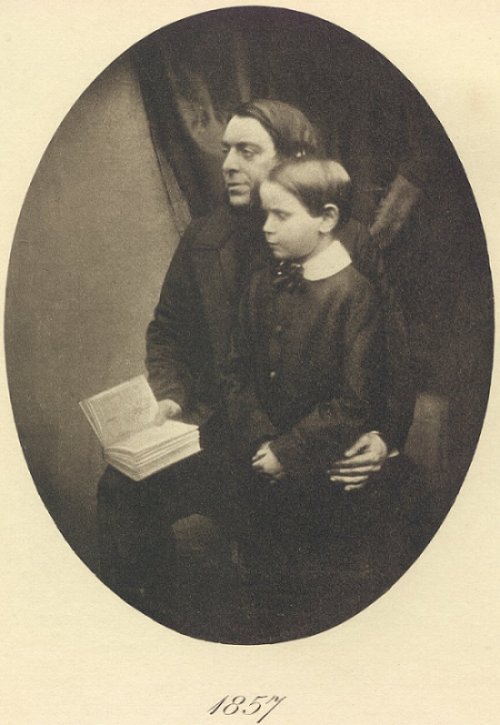Phillip and Edmund Gosse
Today, a Victorian naturalist. The University of Houston's College of Engineering presents this series about the machines that make our civilization run, and the people whose ingenuity created them.
The fervent British naturalist Philip Henry Gosse was born in 1810. He taught himself biology as he traveled Canada, the United States, and the Caribbean. Then he began writing about flora and fauna. He didn't marry until he was thirty-eight. His wife, Emily, was four years older than he, and a fine scholar. The marriage was almost painfully perfect. They shared an intense belief in a completely literal form of Christianity. They supported themselves by writing books; and they were immersed in one another.
A son Edmund was born in 1849. But Emily contracted breast cancer when he was only nine, and she died, stoically, in great pain. Edmund Gosse grew up to become a great British writer and, in 1907, he published (anonymously) a book with the title, Father and Son. Finally, in the preface to the fourth printing, he said that his veil of anonymity had been shredded, and hiding his identity could henceforth be only an affectation.
He opens with the words, "This book is the record of a struggle between two temperaments, two consciences and almost two epochs." He truly does record the struggle between two epochs. Edmund describes how, in 1857, Philip Gosse grappled with the growing implications of the geologic record. He was an admirer of Darwin, who had yet to publish Origin of Species. Philip knew that intellectual devastation was coming and he wanted to avert it.
So he wrote a book, Ompholos, which means navel or belly button. Did Adam have one? Yes he did, said Gosse, because God created everything in its complete form, as though it had a history. Adam's navel, like the geologic record, was placed here intact. God gave us a history, even though we didn't actually have one.
Gosse thought this would instantly resolve the developing conflict -- that geologists and religionists alike would embrace it and make peace. Instead, both dismissed it as nonsense -- and that, just as his beloved wife was dying horribly. Finally, of course, came the last great wound -- the secularization of Edmund.
When twenty-year-old Edmund made a trip home and was met with the usual spiritual interrogation, he reacted in anger, rupturing what'd been a close relationship. In the book Father and Son, a much older Edmund remembers his much-loved father, but sadly. He now knows they lived on opposite sides of a vast divide.

I learned all this after I'd run across an old Gosse book in the library: Evenings at the Microscope, written the year after Emily died. It led me through the formation of animals and plants, pouring out a profound love for the whole of nature. I read about human and animal hair, flies feet, protozoa, and paramúciums.
The sheer beauty of it drew me in until it sent me looking for the story behind it. In the end, I was drawn into a strange tale of science as both cultural disruption and reconciliation. I'll be trying to sort out Philip and Edmund Gosse for a long time.
I'm John Lienhard, at the University of Houston, where we're interested in the way inventive minds work.
(Theme music)
E. Gosse, Father and Son: A Study of Two Temperaments. (Fourth Impression) London: William Heinemann, 1908.
P. H. Gosse, Evenings at the Microscope; or, Researches Among the Minuter Organs and Forms of Animal Life. New York: D. Appleton and Company, 1896. (Authorized edition, first published in 1859)
A. Thwaite, E. Gosse: a Literary Landscape, 1849-1928. Chicago: The Uni-versity of Chicago Press, 1984.
See also the Dictionary of National Biography article on "Gosse, Philip Henry (1810-1888)", and this web site.

Frontispiece of Fathers and Sons, 1857 photograph of Philip and Edmund Gosse
(Edmund was eight years old.)